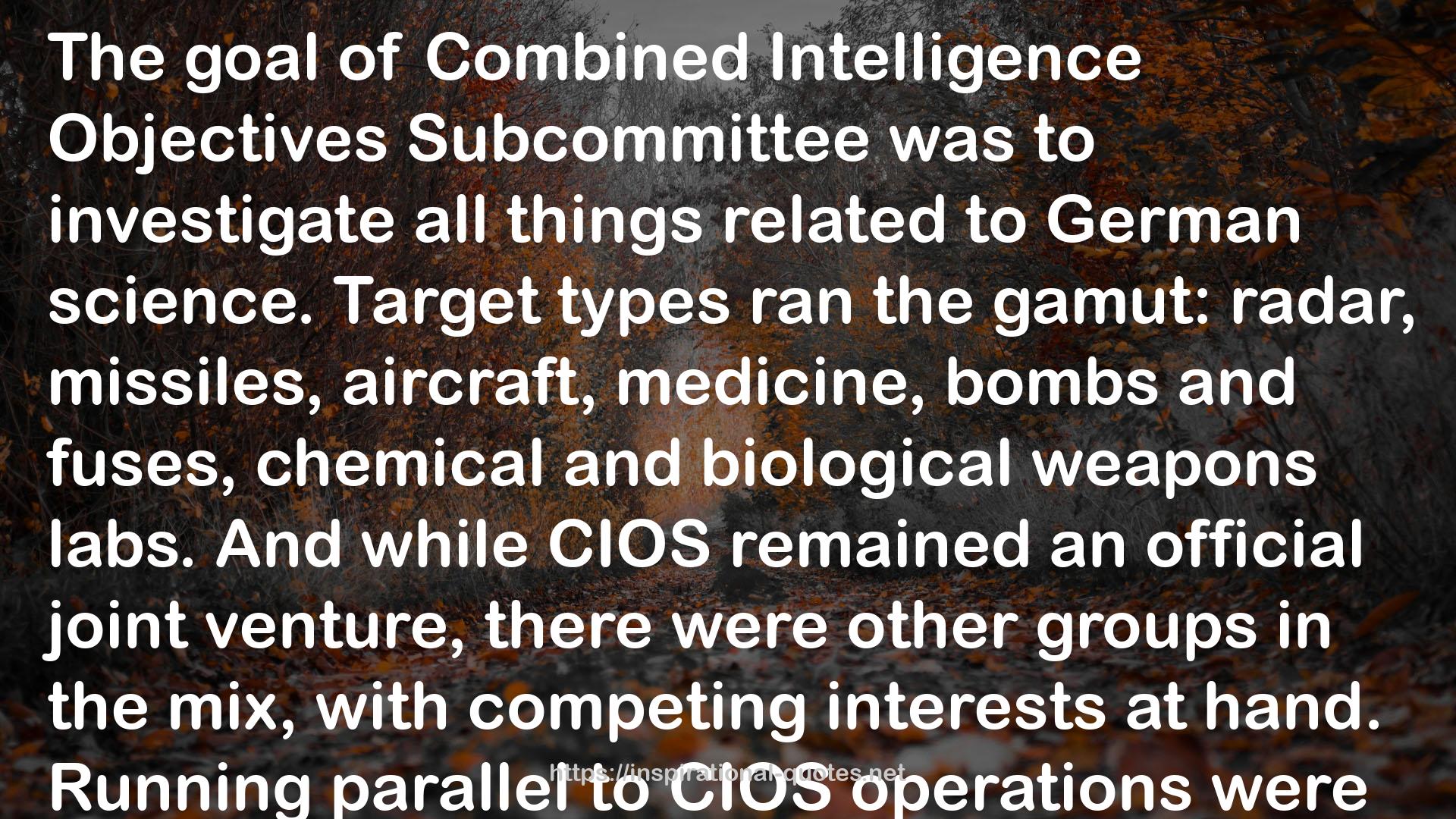1
" The goal of Combined Intelligence Objectives Subcommittee was to investigate all things related to German science. Target types ran the gamut: radar, missiles, aircraft, medicine, bombs and fuses, chemical and biological weapons labs. And while CIOS remained an official joint venture, there were other groups in the mix, with competing interests at hand. Running parallel to CIOS operations were dozens of secret intelligence-gathering operations, mostly American. The Pentagon’s Special Mission V-2 was but one example. By late March 1945, Colonel Trichel, chief of U.S. Army Ordnance, Rocket Branch, had dispatched his team to Europe. Likewise, U.S. Naval Technical Intelligence had officers in Paris preparing for its own highly classified hunt for any intelligence regarding the Henschel Hs 293, a guided missile developed by the Nazis and designed to sink or damage enemy ships. The U.S. Army Air Forces (AAF) were still heavily engaged in strategic bombing campaigns, but a small group from Wright Field, near Dayton, Ohio, was laying plans to locate and capture Luftwaffe equipment and engineers. Spearheading Top Secret missions for British intelligence was a group of commandos called 30 Assault Unit, led by Ian Fleming, the personal assistant to the director of British naval intelligence and future author of the James Bond novels. Sometimes, the members of these parallel missions worked in consort with CIOS officers in the field. "
― Annie Jacobsen , Operation Paperclip: The Secret Intelligence Program that Brought Nazi Scientists to America
18
" In the late 1940s and early 1950s, Olson had traveled across the United States overseeing field tests that dispersed biological agents from aircraft and crop dusters in San Francisco, the Midwest, and Alaska. Some field tests involved harmless simulants and others involved dangerous pathogens, as Senate hearings later revealed. One such dangerous experiment was conducted by Olson and his Detrick colleague Norman Cournoyer. The two men went to Alaska and oversaw bacteria being sprayed out of airplanes to see how the pathogens would disperse in an environment similar to that of a harsh Russian winter. “We used a spore,” Cournoyer explained, “which is very similar [to} anthrax, so to that extent we did something that was not kosher. Because we picked it up all over [the United States] months after we did the tests.” A third man involved in the covert tests with Cournoyer and Olson was Dr. Harold Batchelor, the bacteriologist who learned airborne spray techniques from Dr. Kurt Blome, whom Batchelor consulted with in Heidelberg. Olson and Batchelor also conducted covert field tests in closed spaces across America, including in subways and in the Pentagon. For these tests, the Special Operations Division used a relatively harmless pathogen that simulated how a deadly pathogen would disperse. A congressional inquiry into these covert tests found them “appalling” in their deception. "
― Annie Jacobsen , Operation Paperclip: The Secret Intelligence Program that Brought Nazi Scientists to America

